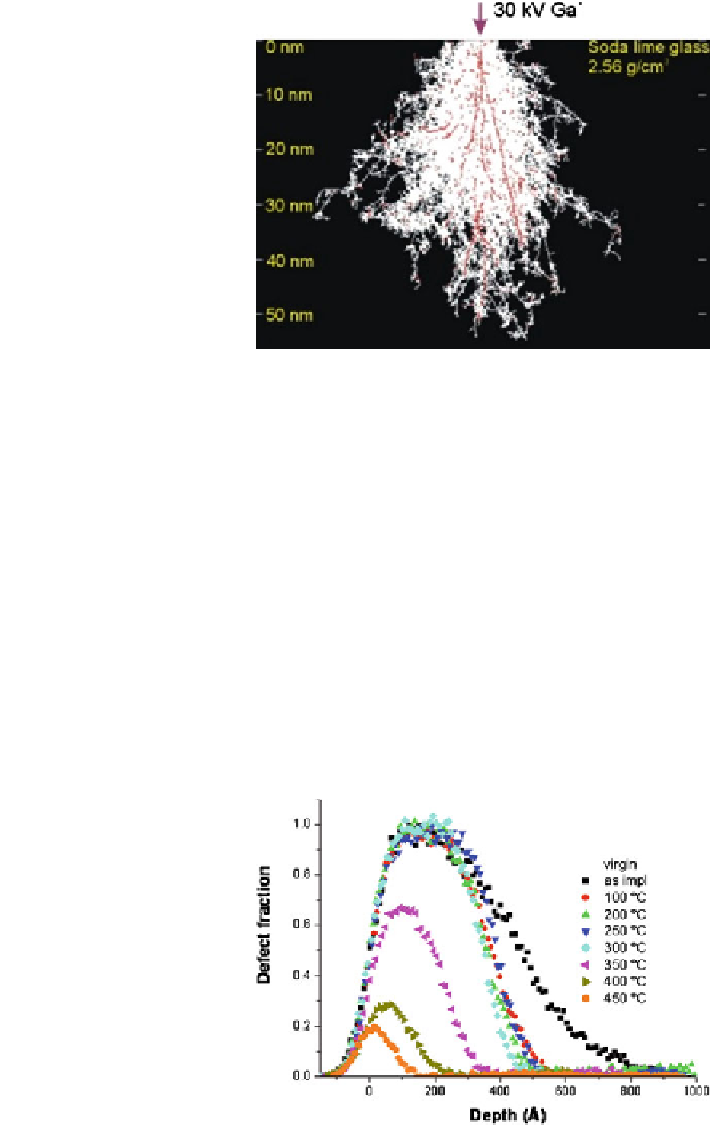Chemistry Reference
In-Depth Information
Fig. 6.5
Collision cascade
the temperature does not give rise to unwanted diffusion phenomena in the solid.
Special annealing tricks such as flash annealing and laser annealing are sometimes
used to avoid such unwanted diffusion phenomena.
Implantation damage is known to anneal out completely in metals even below
room temperature. Only implantation at very low temperature where vacancies are
not mobile results in observable damage. Except for special cases where chemical
affinity plays a role or where e.g. oversized atoms are implanted, ion implantation
in metals results in a final so-called replacement collision which results in a
substitutional lattice location of implanted atoms.
For semiconductors the story is quite different. Many defects created in the
collision cascade are not mobile which can result in defect configurations that do
not anneal at room temperature. Heating to higher temperatures is often necessary
to anneal out most damage. But it is not unlikely that the implanted atom or part of
them remains part of a defect structure. Figure
6.6
illustrates defect recovery after
implantation and annealing a semiconductor host.
Fig. 6.6 Defect recovery
upon annealing

